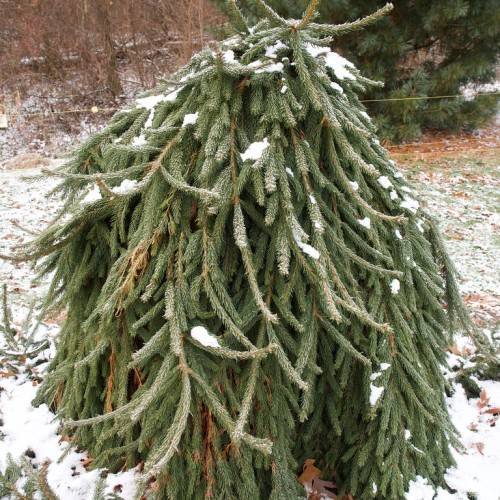
dwarf Norway spruce
Picea abies 'Inversa'
Also Known As - Norwegian SpruceCycle:
Perennial
Watering:
Average
Hardiness Zone:
3
Flowers:
Flowers
Sun:
Full sun, Part sun/part shade
Soil:
Acidic, Well-drained
Cones:
Yes
Leaf:
Yes
Growth Rate:
High
Maintenance:
Low
watering
The Dwarf Norway Spruce (Picea abies 'Inversa') is a slow-growing, attractive conifer that requires moderate watering. Water your Dwarf Norway Spruce thoroughly every 2 to 3 weeks during the growing season (spring to fall), ensuring that the soil is moist but not soggy. In periods of extreme heat, increase watering frequency to once a week. During the winter months, when the tree is dormant, reduce the watering to every 4 to 6 weeks.
sunlight
The dwarf Norway spruce (Picea abies 'Inversa') needs at least 6 hours of direct sunlight each day to thrive. It prefers full sunlight but can tolerate partial shade. When exposed to too much shade, the plant’s growth can become stunted and its needles can turn yellow. The best time for the plant to get the most amount of sunlight is from 9am to 6pm. Avoid placing the dwarf Norway spruce in an area that receives direct sunlight all day long, as this could cause the needles to burn.
pruning
Dwarf Norway spruce (Picea abies 'Inversa') should be pruned in late winter or early spring, just before the new growth begins. Pruning should be light and selective, removing dead or damaged branches, crossing branches, and any branches that are too close together. The goal is to maintain an open and airy look, while still allowing for some fullness. While it is best to retain the natural shape of the tree, branches can be thinned if the tree is becoming too large or dense. Make sure to avoid cutting into old wood, as it does not respond well to pruning. When pruning your Dwarf Norway Spruce, start by removing any deadwood and trouble spots. Then, inspect the tree to assess the natural shape and size, and carefully remove any branches that are too low, crossing, heavily weighted, or growing too close together.
